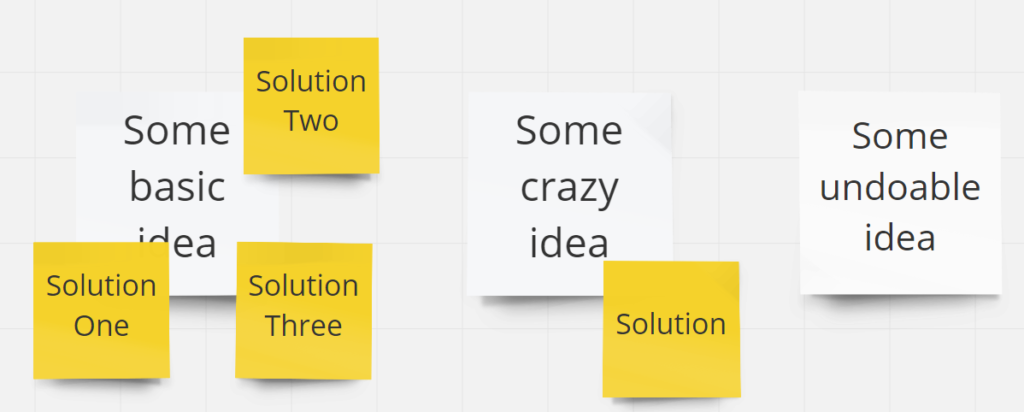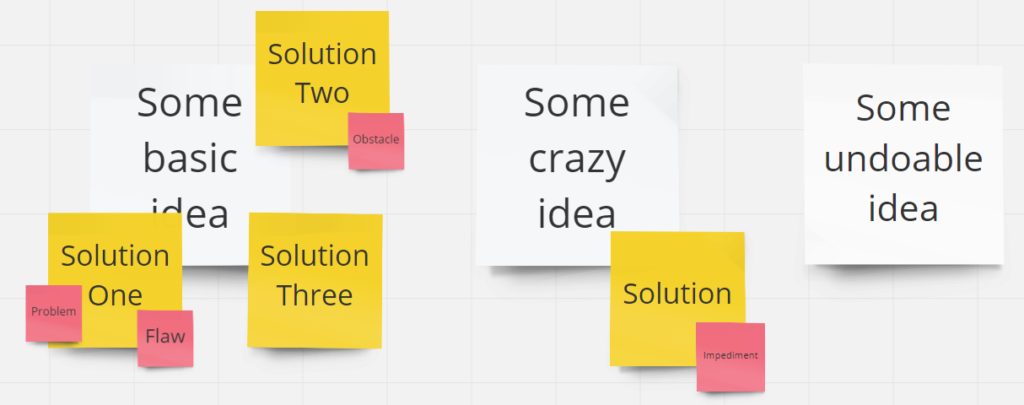When it comes to inventing some new features or products there is a very powerful tool you can use. The Walt Disney Brainstorming (because that’s what I am talking about) was somehow invented by Walt Disney. He didn’t describe it anywhere but he used it on a daily basis. The method was described later in the 90s by Robert Dilts, basing on interviews with former Disney’s coworkers.
Most of us think in a similar way. We have an idea and instantly we look for a solution and moment later we seek for downsides of it. That way most of the ideas are abandoned because they are either too hard to implement or have too many problems bound to them.
Walt Disney Brainstorming is an approach of thinking, where you are going to distinguish these 3 roles:
- dreamer (inventing ideas)
- realist (finding solutions)
- critic (finding downsides)
Walt Disney Brainstorming overview and requirements
This workshop will take around 60 minutes. You will need a whiteboard or flipchart, black pen, and at least two stacks of post-its (yellow and pink/red).
The workshop will consist of the briefing, 3 main phases, and debriefing. Every part is strictly timeboxed to keep participants on their toes and maximize the effectiveness of the workshop.
Briefing
Start with describing rules to participants and tell them what problem are you trying to solve with the workshops. Mention what will be three phases and answer any initial questions.
Dreamer (15 minutes timebox)
Firstly the group should focus on generating as many ideas about the topic as possible. Don’t think about if they are possible to implement or not. Imagine the fun, simple, and easy ways. You don’t need to be rational. Note every idea on the whiteboard. After 15 minutes stop and move to another phase.

Realist (15 minutes timebox)
Secondly focus only on finding solution that implement ideas, which are noted on the board. Don’t criticize yet. Assume possitive yet realistic approaches. Happy path scenarios are welcomed as long as they are doable.
Put every solution on a yellow post-it and put it on the idea. Some ideas might get multiple solutions and others might not even get one and that’s fine. After 15 minutes stop and move to another phase.

Critic (15 minutes timebox)
Later on, change your approach. Now you are going to find all problems with the previously proposed solution. Make sure to point out everything that is a potential risk, uncertainty, or known problem. Criticize as much as possible. Put all problems on smaller red post-its and attach them to yellow solution notes. After 15 minutes stop and debrief.

Debriefing of the Walt Disney Brainstorming
After this challenging 45 minutes of mental exercises, you hopefully have multiple ideas with even more solutions and problems caused by them. Your task from now on will be prioritization the solutions.
You can start right away and during debriefing label together all solutions with one of three options: DO / MAYBE / DONT’DO.
It’s your time to try this out!